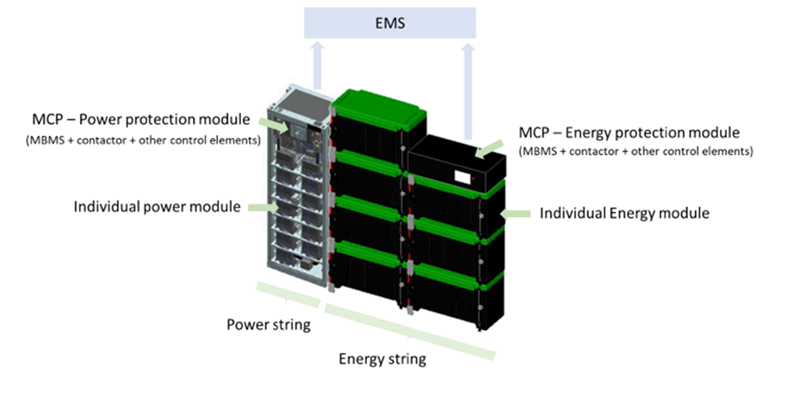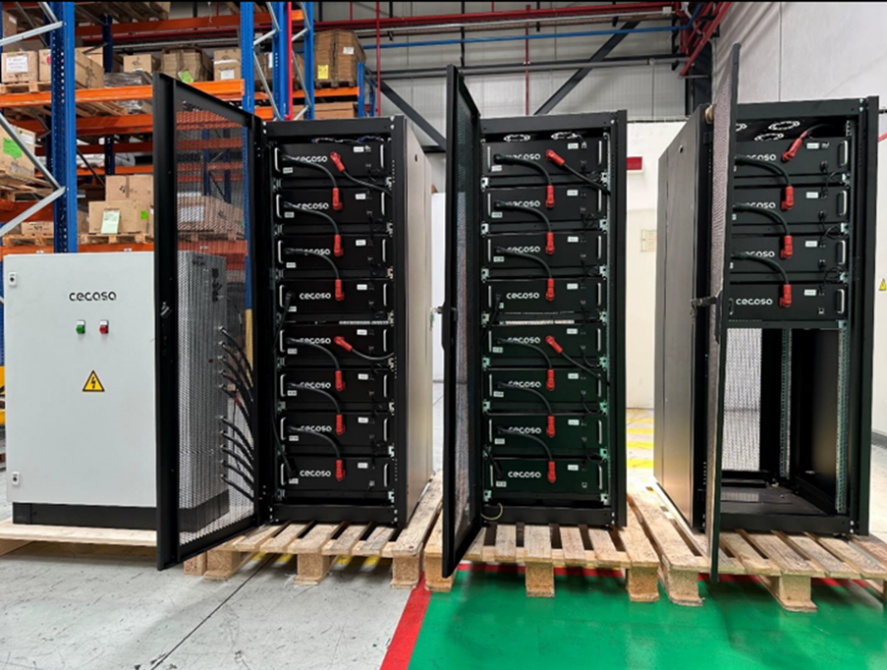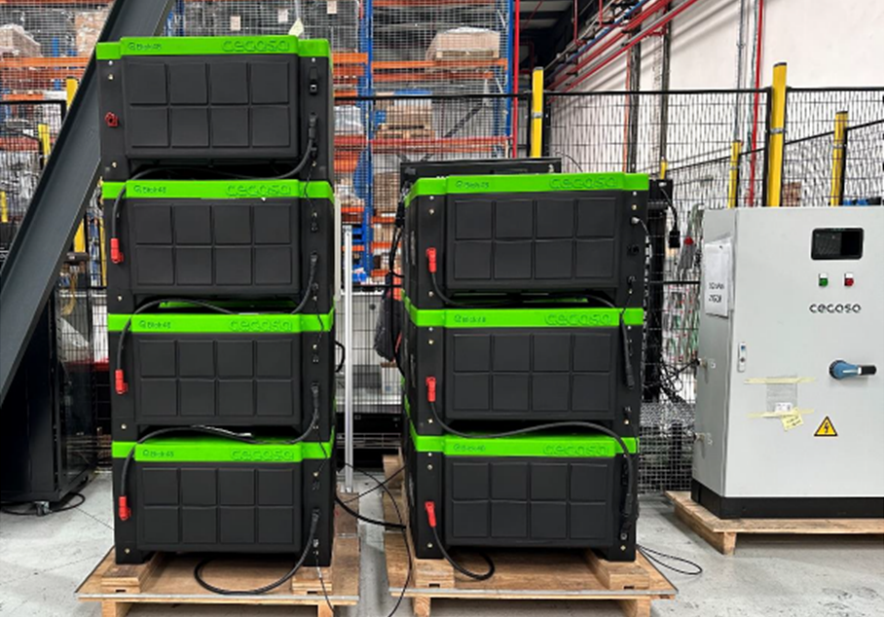This result has been achieved by partners CEG, GW, TNO and CEA.
Introduction
CEGASA successfully developed and manufactured a hybrid battery system with optimized energy and power components. The high-energy battery was built using CEGASA’s existing commercially available technology, streamlining its development, while the high-power battery presented a significant challenge due to its entirely new design, cells, and chemistry.
Despite challenges, both batteries were manufactured, passing CEGASA’s Factory Acceptance Test (FAT) procedures. The Total Cost of Ownership (TCO) analysis showed a potential of >17% reduction for one the analyzed use-cases, demonstrating the economic viability of the hybrid system.
Objective
The objective was to develop and manufacture a prototype of a Hybrid Energy Storage System (HESS) with high-energy and high-power modules. Specifically, the aim was to create a hybrid battery system for its use in the iSTORMY project, integrating LFP cells for energy optimization and NMC cells for power optimization.
The high-energy battery used modifications of an existing CEGASA commercial battery, ensuring a simpler development process. However, the high-power battery, presented challenges in design, cells, and chemistry. The goal was to integrate both batteries with power electronics for the iSTORMY project demonstration.
Research
Research focused on developing a hybrid battery system with distinct high-energy and high-power modules. CEGASA initially intended to use their standard 48V, 280Ah module for the high-energy battery but adapted it to a smaller cell size (160Ah) and increased the number of cells per module due to size constraints. The high-power module was a new design with cells selected for improved thermal behavior. Both batteries underwent testing following CEGASA’s Factory Acceptance Test (FAT) procedures to ensure quality and performance.
Result
The result is a Hybrid Energy Storage System (HESS) prototype consisting of two battery types: high-energy (LFP cells, 7 modules, 7.7 kWh) and high-power (NMC cells, 20 modules, 2.5 kWh). The final prototype includes an Energy Management System (EMS) and underwent validation tests for both high-energy and high-power batteries.
The adaptability of the high-energy battery to existing commercial technology ensures practical deployment, while the innovative high-power battery opens possibilities for broader applications.
The hybrid battery system will be used in the Concept Grid facility of EDF demonstration in Work Package 5. The system’s configuration, combining optimized energy and power modules, aims to showcase its suitability for various applications, with potential use in renewable energy storage and power management systems.
Impact
In general, the impact lies in the successful development of a hybrid battery system tailored for the iSTORMY project. Additionally, the reduction in Total Cost of Ownership demonstrates the economic viability and competitiveness of the hybrid system, making it a promising solution for energy storage needs. Further analysis in Work Package 5 will consider additional benefits.
Figure 1 – Drawing of the hybrid battery
Figure 2 – High-power battery system
Figure 3 – High-energy battery system


